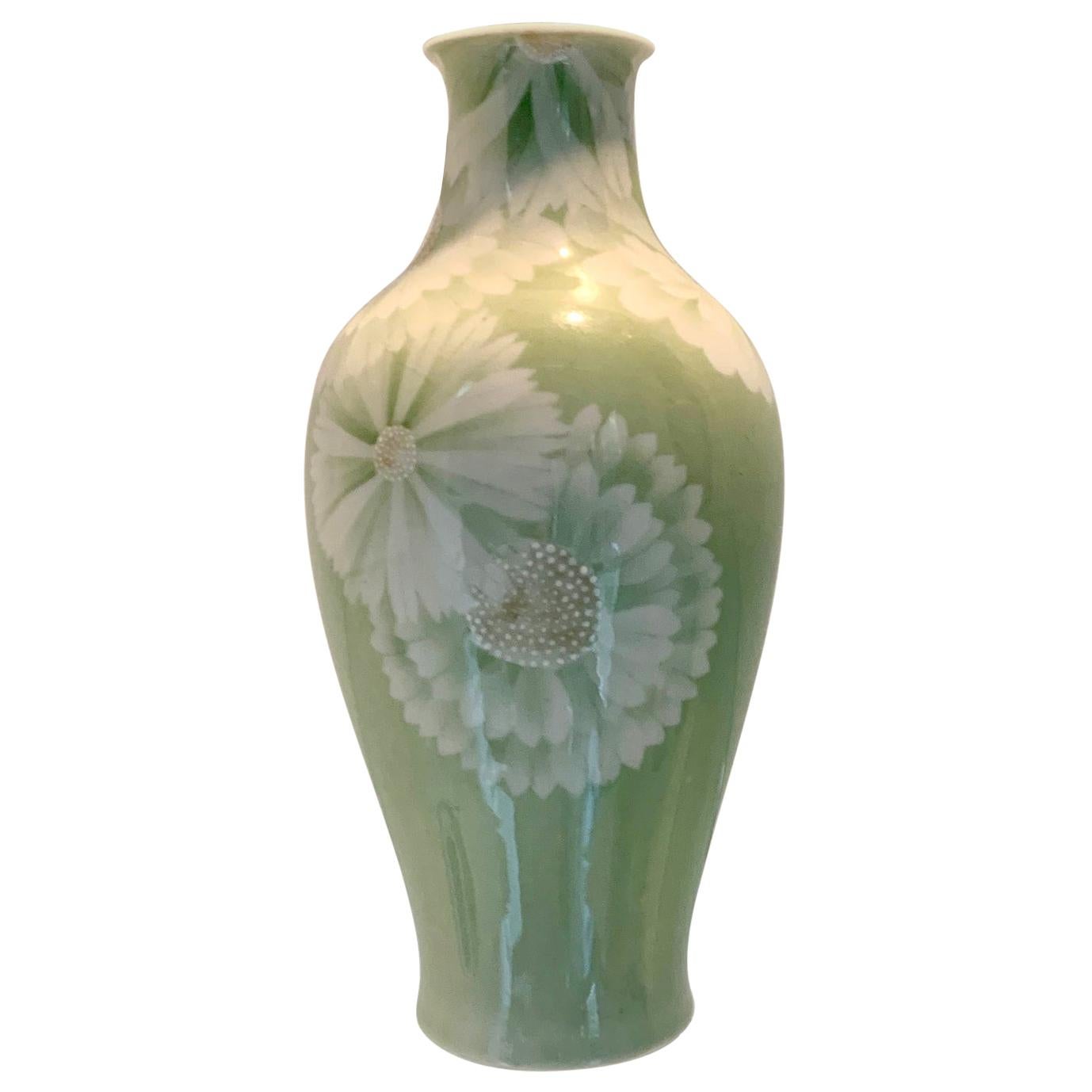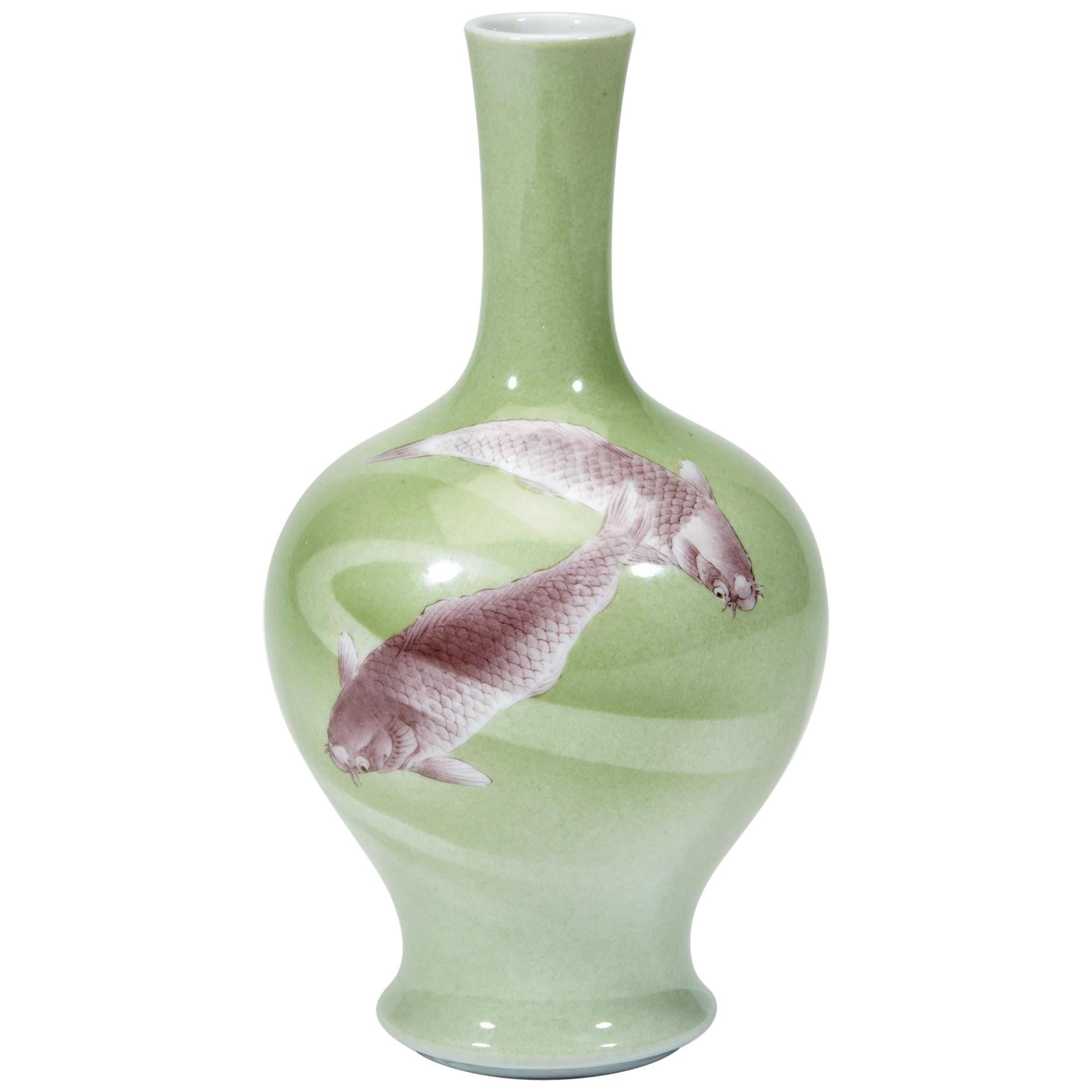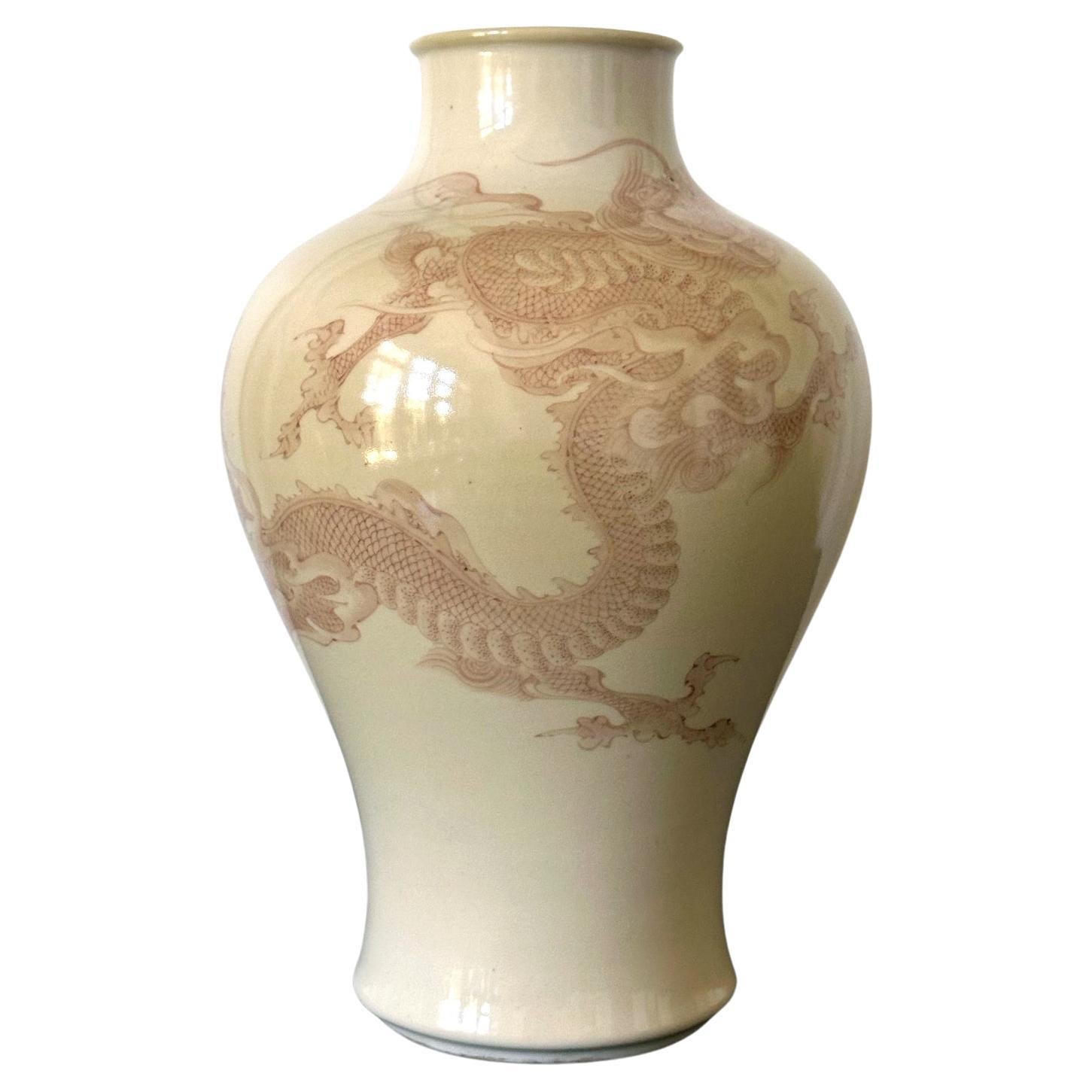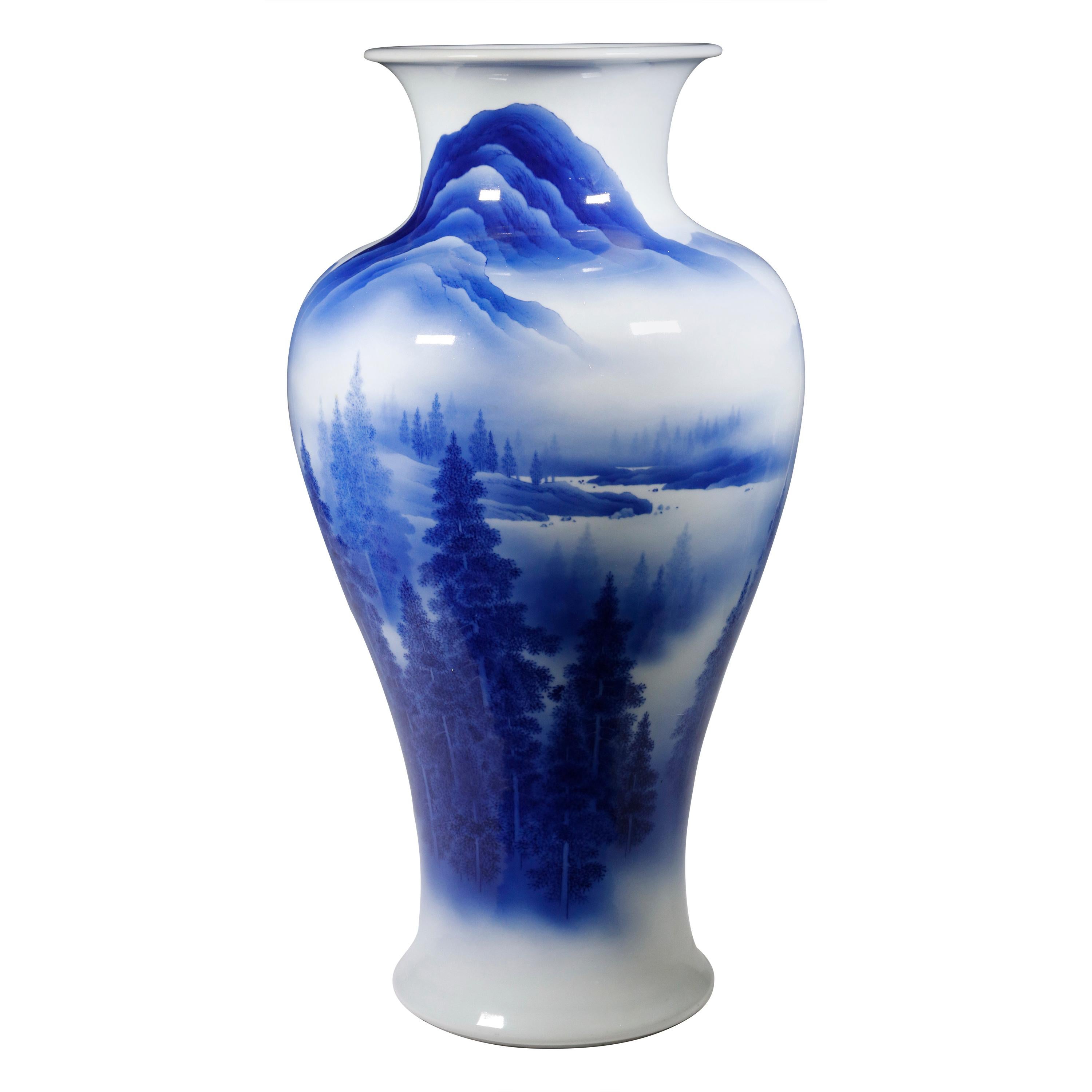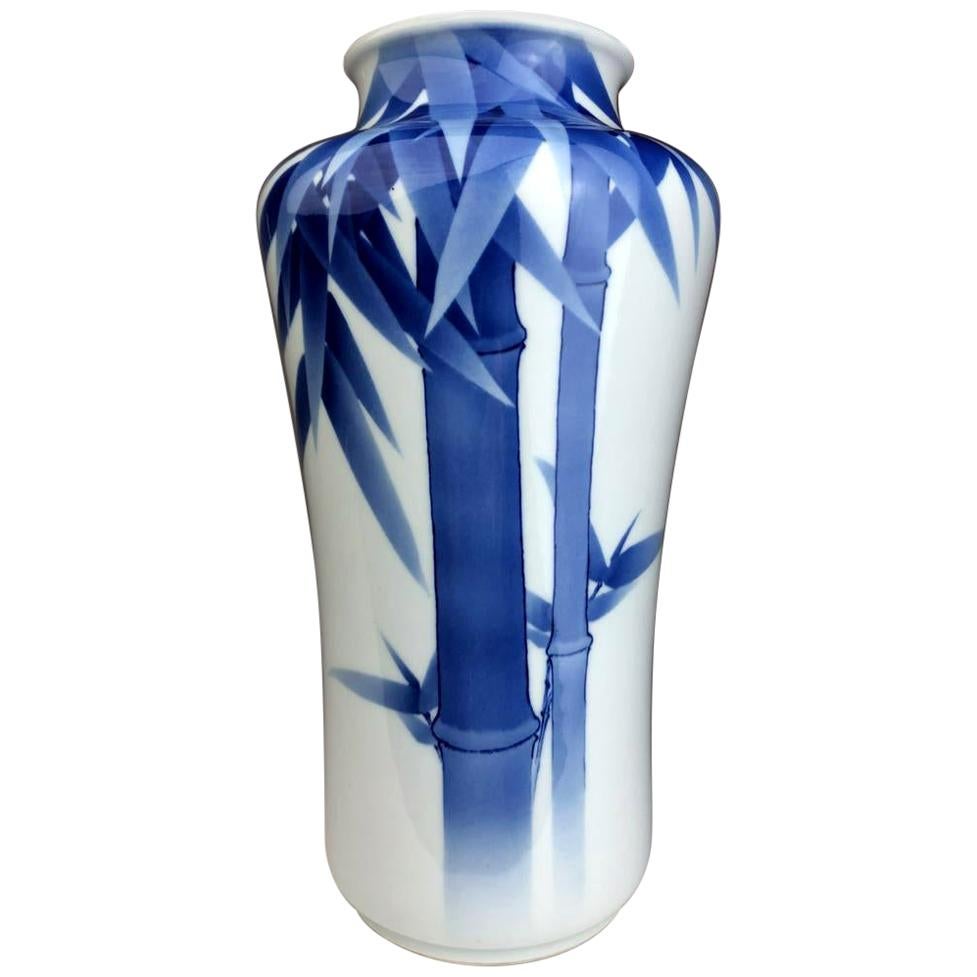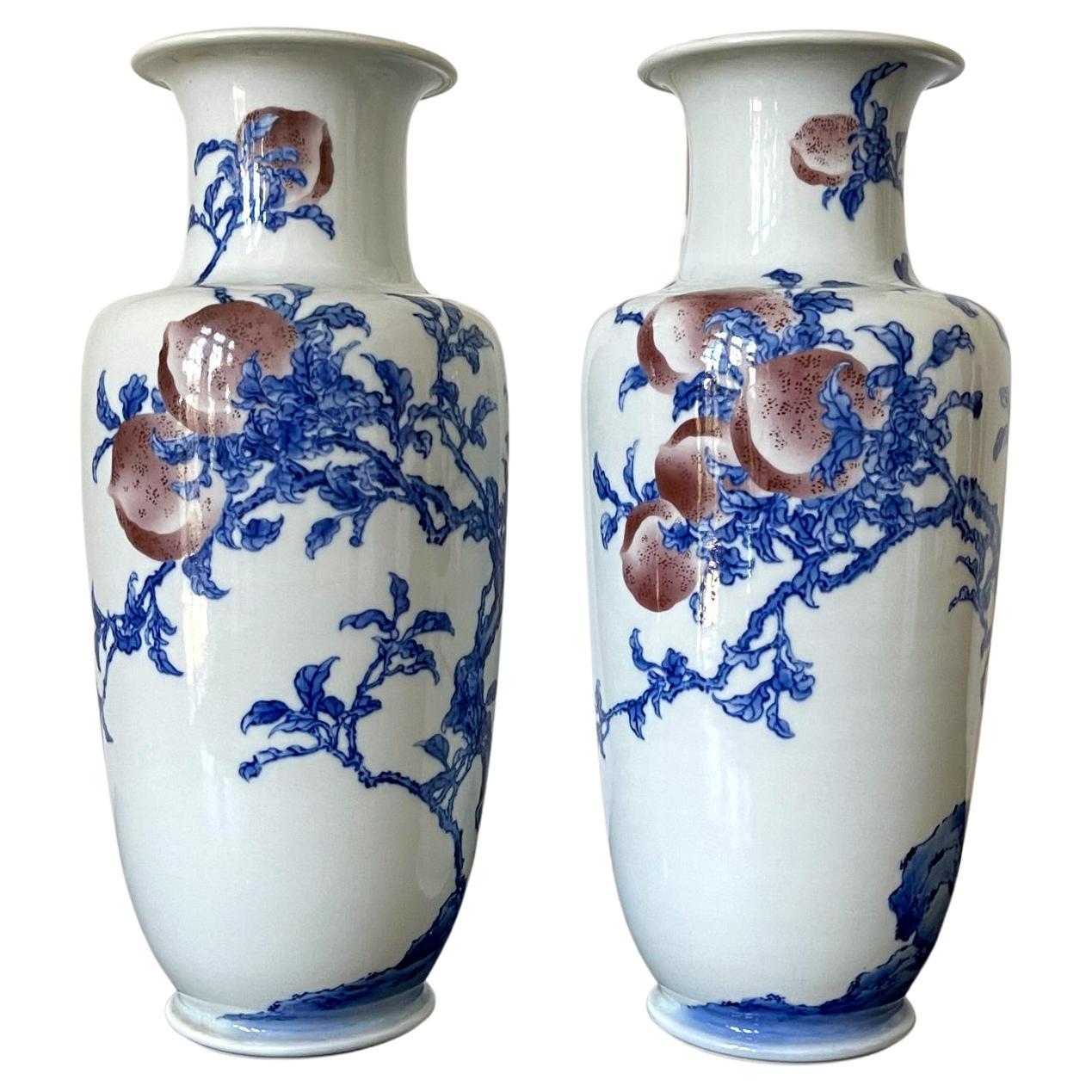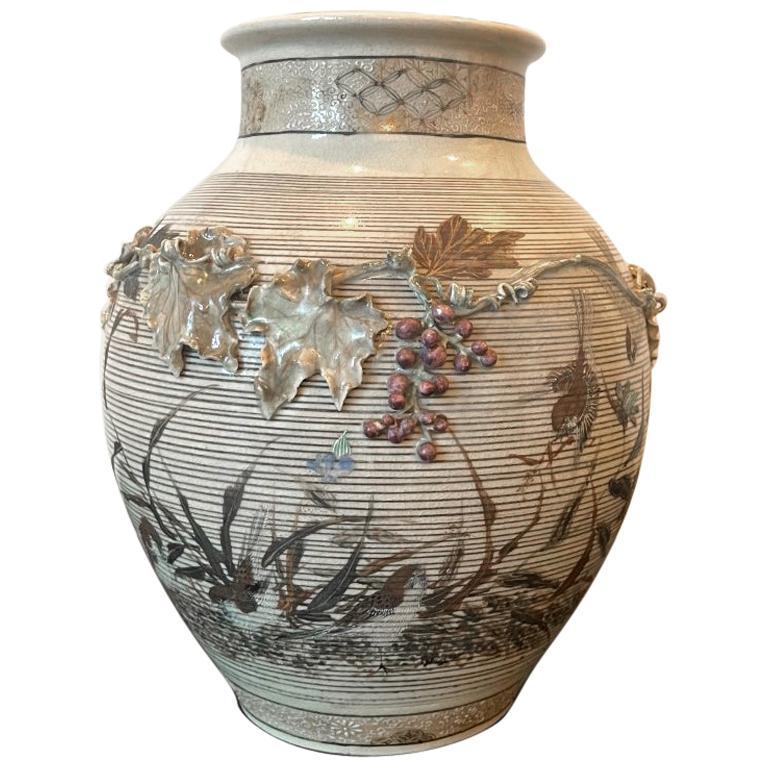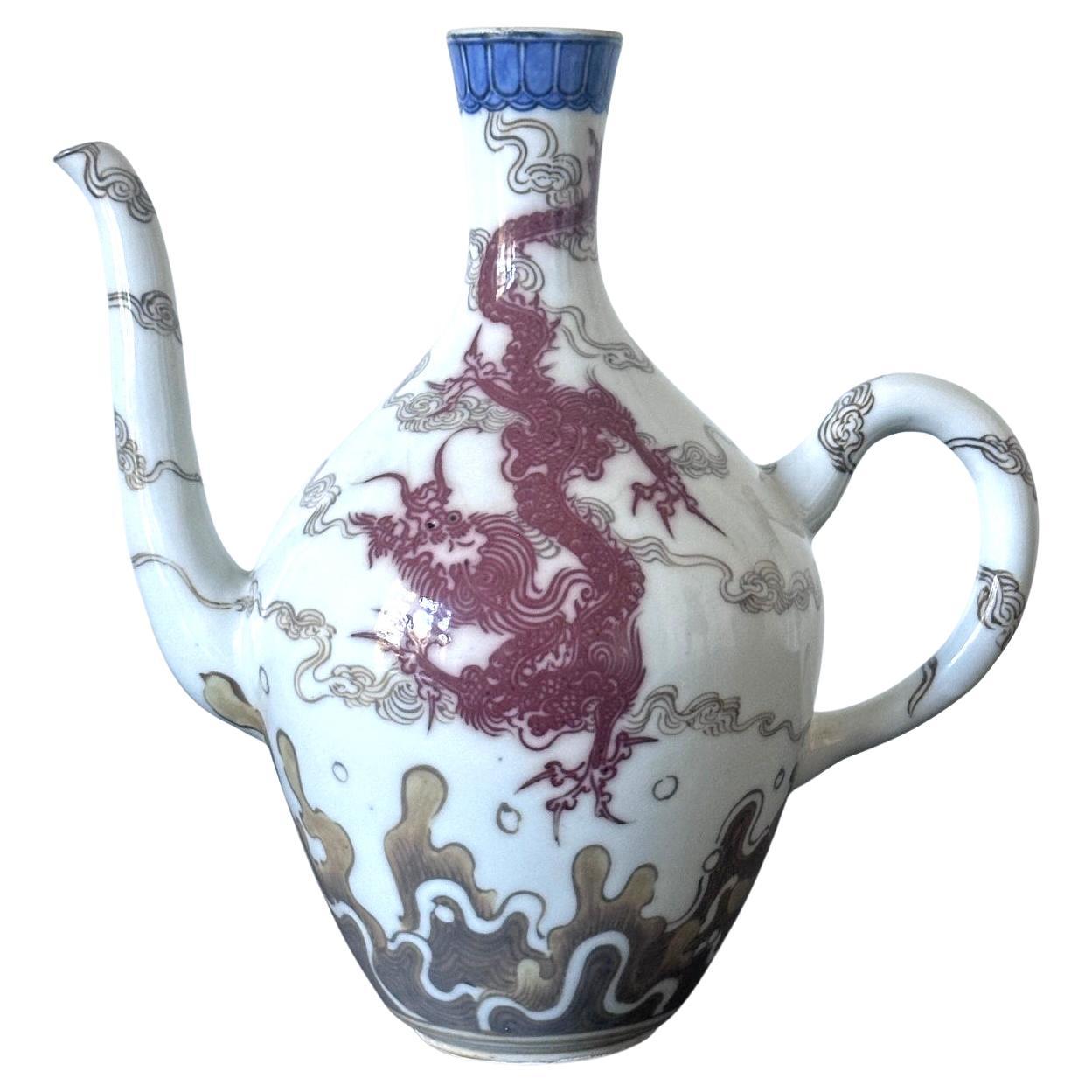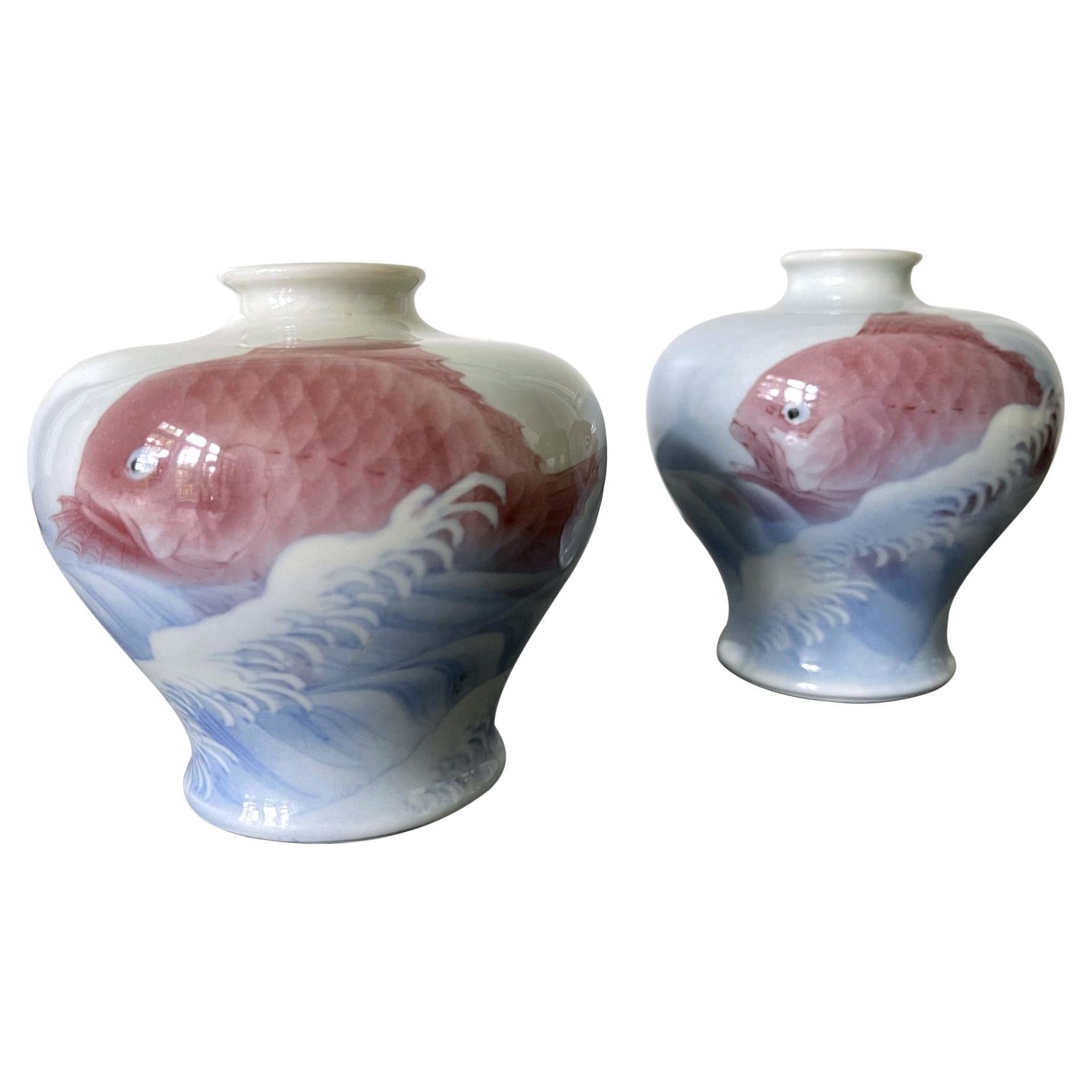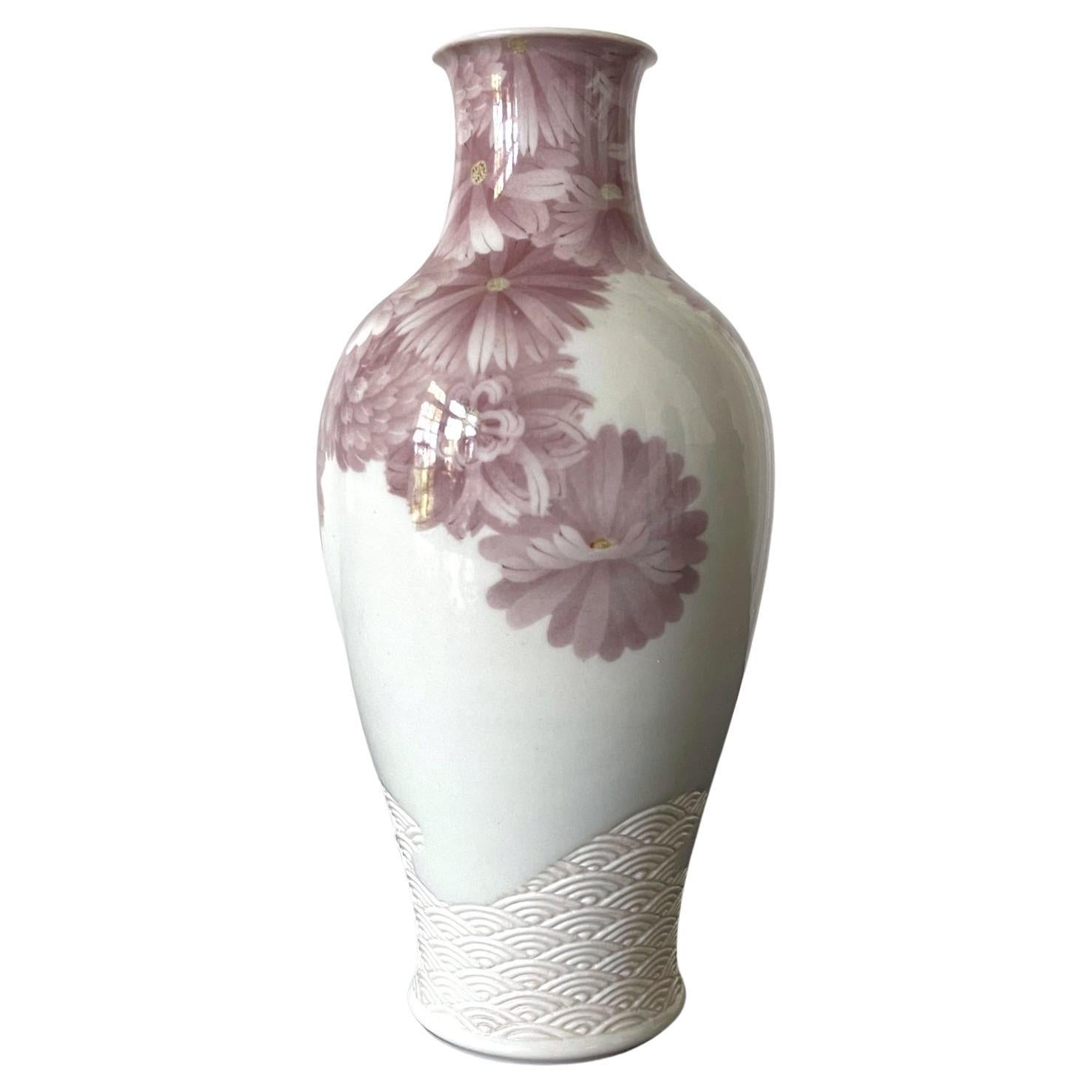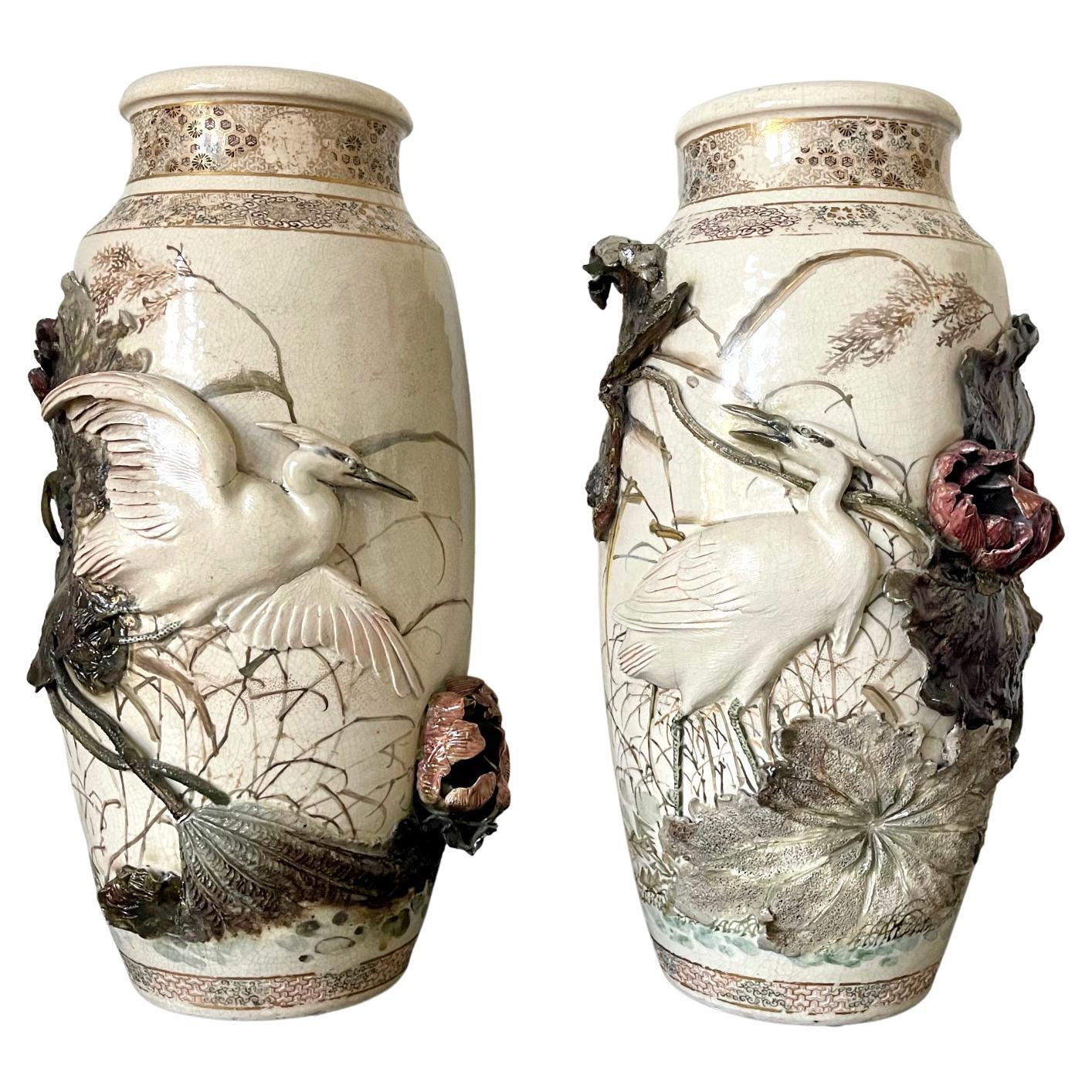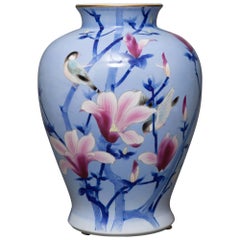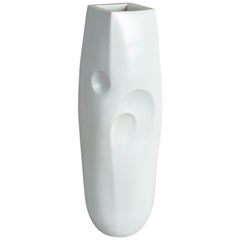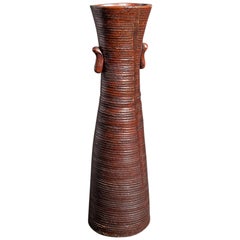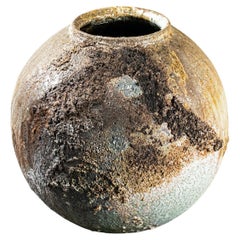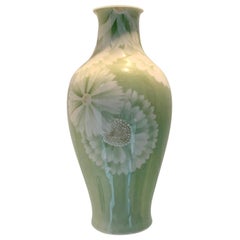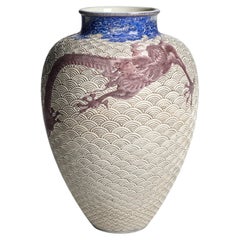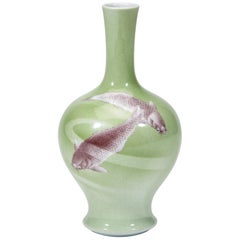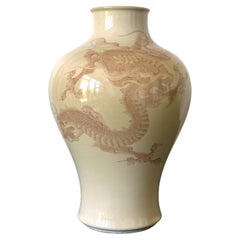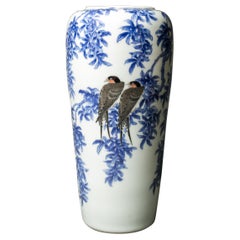
Studio Vase of Willow Tree and Swallows, by Makuzu Kozan (1842 -1916)
View Similar Items
Want more images or videos?
Request additional images or videos from the seller
1 of 9
Studio Vase of Willow Tree and Swallows, by Makuzu Kozan (1842 -1916)
About the Item
- Creator:Makuzu Kozan (Maker)
- Dimensions:Height: 12 in (30.48 cm)Diameter: 5.5 in (13.97 cm)
- Style:Meiji (Of the Period)
- Materials and Techniques:
- Place of Origin:
- Period:
- Date of Manufacture:circa 1890
- Condition:Most items that are 100 years old have been cleaned or polished in their lifetime. More involved restorations are mentioned in the above description. For a detailed condition report and a video of this item please contact us directly. -Naga Antiques.
- Seller Location:Hudson, NY
- Reference Number:Seller: A31471stDibs: LU855123305502
About the Seller
5.0
Recognized Seller
These prestigious sellers are industry leaders and represent the highest echelon for item quality and design.
Established in 1971
1stDibs seller since 2008
163 sales on 1stDibs
Typical response time: 12 hours
Associations
The Art and Antique Dealers League of AmericaAntiques Associations Members
Authenticity Guarantee
In the unlikely event there’s an issue with an item’s authenticity, contact us within 1 year for a full refund. DetailsMoney-Back Guarantee
If your item is not as described, is damaged in transit, or does not arrive, contact us within 7 days for a full refund. Details24-Hour Cancellation
You have a 24-hour grace period in which to reconsider your purchase, with no questions asked.Vetted Professional Sellers
Our world-class sellers must adhere to strict standards for service and quality, maintaining the integrity of our listings.Price-Match Guarantee
If you find that a seller listed the same item for a lower price elsewhere, we’ll match it.Trusted Global Delivery
Our best-in-class carrier network provides specialized shipping options worldwide, including custom delivery.More From This Seller
View AllJapanese Porcelain Studio Art Vase
Located in Hudson, NY
With lovely magnolia tree in bloom and finch on blue background. Signed: Fukugawa.
Category
20th Century Japanese Meiji Ceramics
Materials
Porcelain
Large Japanese Porcelain Studio Vase
Located in Hudson, NY
With organic abstract design. Artist signature on the bottom and on original storage box: Hasegawa Isamu. This vase exhibited at the 2nd Nitten in 1970. Hasegawa Isamu was born in 1925 in Kyoto, son of famed porcelain artist Hasegawa Hakuho...
Category
Vintage 1970s Japanese Ceramics
Japanese Bizen Flower Vase
Located in Hudson, NY
Meiji period (1868 - 1912) ceramic vase from Okayama Prefecture. Comes with collector's box. Signature reads Kinetsu.
Category
Early 20th Century Japanese Meiji Vases
Materials
Ceramic
Japanese Vase
Located in Hudson, NY
signature reads: Nishiura (opening: 4 7/8" diameter). About the artist: Nishiura Takeshi was born in Fukui prefecture in 1941, and graduated the Tokyo University Law Department in 19...
Category
20th Century Japanese Ceramics
Materials
Ceramic
$7,500
Edo Period Bizen Vase
Located in Hudson, NY
Edo period Bizen vase, late Edo period (mid-19th century) ceramic vase from Bizen, one of the six ancient kilns in Japan. Unusual undulating rim, with tradi...
Category
Antique Mid-19th Century Japanese Edo Ceramics
Materials
Ceramic
$8,500
Large, Beautiful Country-Ware Vase
Located in Hudson, NY
Large, beautiful country-ware vase. Possibly Oribe vase with beautiful blue-green drip over-glaze and other nice glazing techniques. Small "ears" on the side. Taisho period handmade ...
Category
Early 20th Century Japanese Taisho Ceramics
Materials
Ceramic
You May Also Like
Japanese Porcelain Vase Meiji Period Makuzu Kozan
By Makuzu Kozan
Located in Atlanta, GA
A finely decorated and glazed Japanese porcelain vase by Makuzu Kozan (1842-1916) circa 1900s Meiji Period. The vase is of a classic bottle form with baluster body and short neck. It was decorated with underglaze white magnolia blossom on a pleasant celadon background. The stamens of the flower were artistically rendered in a low relief, giving the design a realistic appeal with the dimension.
Miyagawa Kozan...
Category
Early 20th Century Japanese Meiji Ceramics
Materials
Porcelain
Large Japanese Ceramic Vase by Makuzu Kozan Meiji Period
By Makuzu Kozan
Located in Atlanta, GA
A large Japanese ceramic vase by the celebrated Meiji imperial potter Makuzu Kozan (1842-1916) circa 1880-1890s. Dated to his underglaze phase post 1887 after he successfully mastered the new colors available from the west and used them to the best advantage in his work deeply rooted in Japanese aesthetics. The vase has an impressive size and was potted in the classic baluster form with an elegant proportion. The surface is decorated using a combination of techniques of low relief sculpturing...
Category
Antique Late 19th Century Japanese Meiji Ceramics
Materials
Ceramic
Fine Japanese Ceramic Vase Makuzu Kozan Meiji Period
By Makuzu Kozan
Located in Atlanta, GA
A Japanese long neck porcelain vase circa 1900-1910s by the studio of Miyagawa Kozan (1842–1916), one of the most established and collected Japanese ceramist from the end of Meiji Period. Commonly known as Makuzu Kozan, which also appears as the signature on his work, his originally birth name was Miyagawa Toranosuke. He was the appointed artist to the Japanese Imperial household and his work was exhibited in many international fairs that the Meiji government participated at the turn of the century.
This vase features an elegant Classic form with a slender neck and slightly flared mouth above a baluster body. It was finely painted with two swimming carps in a copper red underglaze among green ribbons like waves. The background display a brilliant verdant green overall, Around the fish a poetic hazy effect was emphasized for a visual complexity by Fuki-e (the blow painting), an invention in Kozan's studio. The new technical development of chemical colors from the west was embraced circa 1900s in Kozan studio. This empowered the more creative experiments with not only colors, but also concept of dimension, which led Makuzu Kozan's work to become a bridge between East and West aesthetics. This is particularly evident in this vase with the Masterly details of the brush strokes, the expertly employment of gradient of color, and a very realistic and detailed rendering of the fish and their vivid motions.
For two similar examples of Kozan's work with similar carps decoration, see Page 148-149 of the book: Sekai ni Aisa Reta ya Kimono Miyagawa Kozan Makuzu...
Category
Early 20th Century Japanese Meiji Ceramics
Materials
Ceramic
Large Japanese Porcelain Dragon Vase by Makuzu Kozan Meiji Period
By Makuzu Kozan
Located in Atlanta, GA
Made by the studio of the legendary Japanese imperial potter Makuzu Kozan (1842-1916), this is a large porcelain vase glazed in a soft yellow color with a subtle gradient, on top of ...
Category
Early 20th Century Japanese Meiji Ceramics
Materials
Ceramic
Rare and Large Japanese Porcelain Vase Makuzu Kozan
By Makuzu Kozan
Located in Atlanta, GA
A striking blue and white vase from the studio of Japanese Potter Makuzu Kozan, also known as Miyagawa Kozan (1842–1916), one of the most established and collected ceramist from Meiji Period. Born as Miyagawa Toranosuke, Kozan established his pottery studio in Yokohama around 1870s and later became one of the appointed artist to the Japanese Imperial household. His work was exhibited in many international fairs that the Meiji government participated at the turn of the century and won many grand prizes.
With an impressively large size, this vase was likely made and reserved as a presentation piece for one of the many expositions the studio participated in the early 20th century. It was decorated with underglaze cobalt blue using the novel technique developed by Kozan called Fuki-e (the blow painting), in order to achieve the striking dimensional literary landscape known as "Mountain and Water". Being one of the most creative ceramists, Kozan started experimenting with new chemical colors from the West in the format of his porcelain glaze around 1880s. New colors allowed him to create underglaze designs that appeared bright, smooth and glossy. He even invented his own receipt of cobalt blue to achieve a much brighter yet softer shade, as evident on this vase. To create landscape that is realistic and dimensional, more common in the western paintings, he was inspired by the native Japanese ink painting technique developed around 1900 by Yokoyama Taikan...
Category
Early 20th Century Japanese Japonisme Ceramics
Materials
Porcelain
Japanese Porcelain Vase Makuzu Kozan Meiji Period
By Makuzu Kozan
Located in Atlanta, GA
A striking blue and white vase from the studio of Japanese Potter Makuzu Kozan, also known as Miyagawa Kozan (1842–1916), one of the most established and collected ceramist from Meiji Period. Born as Miyagawa Toranosuke, Kozan established his pottery studio in Yokohama circa 1870s and later became one of the appointed artists to the Japanese Imperial household. His work was exhibited in many international fairs that the Meiji government participated at the turn of the century and won many grand prizes.
Of a relatively large size, this vase is decorated with underglaze cobalt blue using the novel technique developed by Kozan called Fuki-e (the blow painting). As a result, the bamboos appear took on a three-dimensional quality as if appearing in a mist. Known as one of the most creative ceramists, circa 1887, Kozan started experimenting with new chemical colors from the West in the format of his porcelain glaze. New colors allowed him to create underglaze design that appeared bright, smooth and glossy. He even invented his own receipt of cobalt blue to achieve a much brighter yet softer shade, as evident on this vase. To create landscape that is realistic and dimensional, more common in the western paintings, he was inspired by the native Japanese ink painting technique developed around 1900 by Yokoyama Taikan...
Category
Antique Early 1900s Japanese Japonisme Ceramics
Materials
Ceramic
